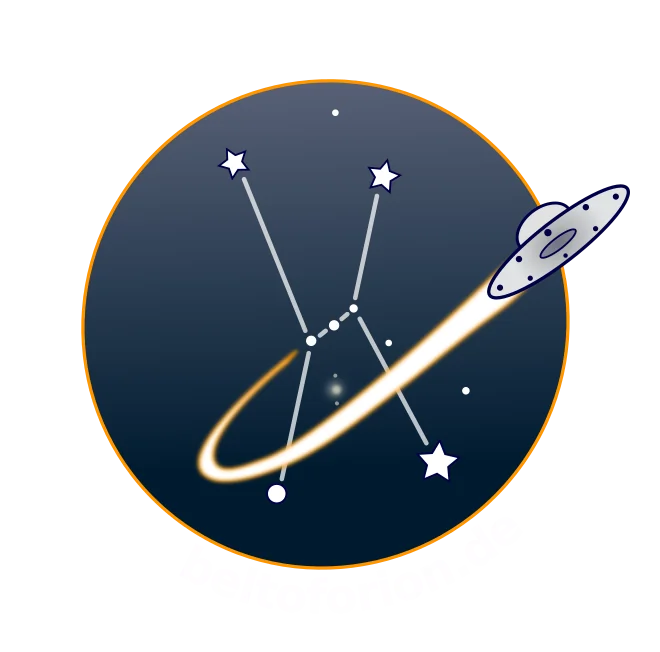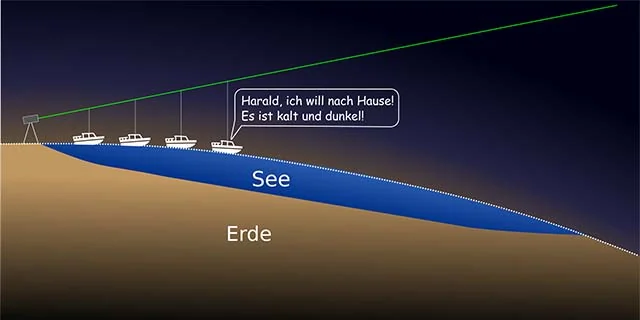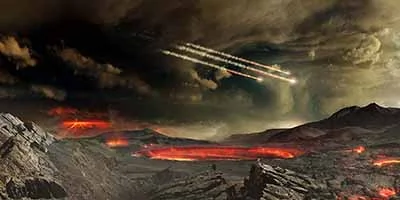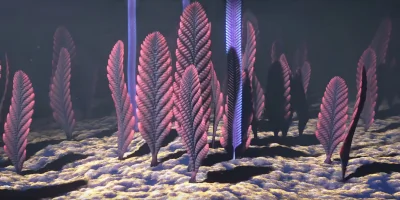Tides explained

What are Tides?
The general definition of the term "Tide" according to Morrison and Owen [3] is that:
"A tide is a distortion in the shape of one body induced by the gravitational pull of another nearby object".
Specifically on Earth the term tide is also used to describe the rise and fall of sea levels caused mainly by the combined effects of the gravitational forces exerted by Moon and Sun. This is a bit misleading since focusing on the sea level is ignoring the fact that tides also affect the solid earth crust. Moreover the observable rise and fall of the sea level is influenced strongly by shoreline topography, ocean currents and the distribution of the continents on earth. For now We will investigate the tides based on the definition given by Morrison and Owen and ignore the effects of topography and ocean currents that lead to more complex tidal cycles. These effects will be explained later in the section Tidal Cycles on Earth.
Start the Tidal Simulation Applet
This web page is partially based on an article called "Tides and centrifugal force" by Paolo Sirtoli [1] as well as the article "Tidal Misconceptions" by Donald E. Simanek [4]. We will start by looking into the gravitational pull that the Moon is exerting on the Earth.
 The port of Alma, New Brunswick at high and low tide by Samuel Wantman
[2].
The port of Alma, New Brunswick at high and low tide by Samuel Wantman
[2].
Gravitational pull of the Moon
The theoretical basis for the computation of the tidal effects caused by Moon and Sun is the same. For simplicity we will first examine the effect of the Moon. We will also ignore Earths rotation in our models since the rotation of Earth has no influence on the existence of the tidal bulges. Lets start by looking at the Earth, the Moon and the Law of Gravity.
 Earth and Moon seen through the multispectral camera of the Near Earth Asteroid Rendezvous (NEAR) spacecraft.
(Source: NASA)
Earth and Moon seen through the multispectral camera of the Near Earth Asteroid Rendezvous (NEAR) spacecraft.
(Source: NASA)
\begin{equation} \label{eq:eqn_grav} \vec F_{1} = \gamma \cdot m_1 \cdot m_2 \cdot { { \vec r_2 - \vec r_1 } \over |\vec r_2 - \vec r_1|^3} = - \vec F_2 \end{equation} where:
- \(\vec F_1\) and \(\vec F_2\) are the forces acting on two masses
- \(\vec r_1\) and \(\vec r_2\) are the position vectors of the two masses
- \(m_1\) and \(m_2\) are the masses in \(kg\)
- \(\gamma\) is the gravitational constant ( \(6.674 * 10^{-11} { m^3 \over {kg*s^2} }\) )
At first we will exclusively look at the acceleration caused by the gravity of the Moon on objects lying at the surface of Earth. For the moment we also assume both Earth and Moon are pinned down in space and not orbiting one another. By substituting the force in Equation 1 with Newtons second law of motion (\(\vec F = m \cdot \vec a\)). We can quickly rearrange this equation to calculate the acceleration of a body lying on the earths surface due to the gravitational pull of the moon (Equation 2):
$$\vec a(\vec r) = \gamma \cdot m_m \cdot { { \vec r_m - \vec r } \over |\vec r_m - \vec r|^3}$$ Where:- \(\vec a\) is the acceleration of the body laying at the earths surface
- \(\vec r\) and \(\vec r_m\) are the position position vectors of the body and the moon
- \(m_m\) is the mass of the moon in \(kg\)
Visualizing the acceleration vectors for a variety of points located at the surface of Earth as well for its center of mass we get the following result:
Computing the acceleration caused by the gravity of the moon. The Moon is drawn unrealistically close to earth. Use the mouse to drag the moon and investigate the acceleration vectors.
The sizes of Earth and Moon in the image above are to scale. You may use the button to toggle between a visualization that is correct with respect to distance and one that shows the Moon unrealistically close to Earth. In latter setup you can grab the moon with the mouse and move it around to see how the acceleration vectors change.
For the sake of completeness I have also added a marker to denote the common center of mass of the system Earth-Moon. There are a few things you will notice:
- The acceleration is greater on the side of Earth facing the Moon. This effect is smaller if the Moon is further away.
- The accelerations vectors are pointing to the Moons center of mass
- If the Moon is far away the acceleration vectors are almost parallel
The visualization above exclusively visualizes the gravitational forces caused by the Moon. Earths own gravity is ignored. If you do the math you will realize that the acceleration caused by the moon is by orders of a magnitude lower that the acceleration caused by Earths own gravity (3.3e-5 m/s² vs. 9.8 m/s²). It is also slightly lower on the side of Earth opposing the Moon.
Consequences of Orbital Motion
So far we have computed the gravitational pull of the Moon on the surface of Earth. We learned that unsuprisingly the acceleration vectors caused by the gravity of the Moon are in fact pointing towards the Moon. We used a bit of unscientifc magic and fixed the positions of Moon and Earth in space. With that constraint water following in the direction of the acceleration vectors would form a single tidal bulge on the side of Earth facing the Moon. In reality two tidal bulges can be observed on Earth.
Earth needs 24 hours to complete a rotation around its axis. The Moon takes 27.32 days to complete a single orbit around Earth. In a single day the Moon travels an angular distance of:
$$360°/27.32 d = 13.18°$$Consequently a place on Earth will have the same position with respect to the Moon after 24 hours and 52 minutes. If there were only a single tidal bulge that would be the observabvle period of the tides.
Observing the time between two high or low tide events at most ocean sites on Earth gives 12 hours and 25 minutes (a notable exceptions are diurnal tides). That is pretty much exactly half of the previous number. The logical conclusion is that there must be two tidal bulges on opposing sides of the planet. Our current model does not account for that because we have ignored that Earth and Moon are gravitationally bound to one other. They do not sit still in space but orbit one another around common center of mass (also called the barycenter).
For this investigation we have selected a reference frame located at the center of mass of the Earth-Moon System. The system itself does not rotate or accelerate and remains fixed with respect to the rest of the universe. (We are ignoring the Sun and Earths orbit around it for the moment.) In physics such a system is referred to as an inertial frame of reference.
The Earths center describes a nearly circular orbit of radius \(d\) around the common center of mass with the angular velocity \(\omega\). The average distance of Moon and Earth is 385000 km. The distance of the common center of mass from the center of Earth can be computed with the following equation:
\begin{equation} r_{cm} = 385000 km \cdot {m_m \over {m_e + m_m}} = 4678 km \end{equation} where:- \(r_{cm}\) - Distance to the center of the Earth
- \(m_e\) - Mass of the Earth (5.9721986e24 kg)
- \(m_m\) - Mass of the Moon (7.3459e22 kg)
The first thing you might notice is that the common center of mass of the system Moon-Earth is still within Earth at a depth of 1700 km below Earths surface. If we now trace a point on the earths surface we will discover that each point is following a circular path with the same radius as the distance between Earths center and the common center of mass. Each one of these paths has a different center. In our reference frame each of the points on and within our (non rotating) earth is experiencing the same centrifugal acceleration of:
$$ a_z = \omega^2 \cdot r_{cm} $$This is caused by Earths motion around the common center of mass of the system Earth-Moon. Lets briefly compute the centrifugal acceleration based on the length of the lunar month (27.32 days). We obtain an angular velocity of:
$$ \omega = 2 \cdot \pi \cdot { 1 \over { 27.32 d \cdot 86400 s} } = 2.662 \cdot 10 ^{-6} s^{-1} $$Which represents a centrifugal acceleration of:
$$ a_z = (2.662 \cdot 10 ^{-6})^2 \cdot 4678000 = \underline { \underline { 3.31 \cdot 10^{-5} {m \over s^{2} } }} $$By subtracting this acceleration from the acceleration caused by the gravitational pull of the Moon we obtain the tidal acceleration. But before we do that hold on a second.
First we will have a closer look at the center of the Earth. The centrifugal force computed above is the same in any point on and within Earth and is always pointing in the same direction. This means it is also acting on the center of Earth itself (see orange arrow in the animation above). If we have a centrifugal force acting on Earths center of mass why is Earth not moving away from the Moon? What is keeping it in its place? The gravity of the Moon does! If we compute the acceleration caused by the gravitational pull of the Moon acting on the Earths center we obtain:
\begin{equation} \label{eq:eqn_grav_moon} a_g = \gamma \cdot { m_m \over d^2 } = 6.675\cdot10^{-11} \cdot { {7.349 \cdot 10^{22} } \over 385000000^2} = \underline { \underline {3.31\cdot10^{-5} {m \over s^{2} }} } \end{equation} $$ a_g = a_z $$The centrifugal force is kept in balance by the gravitational force of the Moon which is acting as the centripetal force. Instead of computing the centrifugal acceleration it is more convenient to compute the gravitational force excerted by the Moon to the center of Earth and subtract this force from the acceleration vectors obtained by Equation 2 in order to obtain the tidal acceleration. If this done for the acceleration vectors on Earths surface we get the following results:
The tidal acceleration forms two bulges on the side facing Moon and on the opposing side. (Please note: Earths rotation is deliberately ignored here because it does not contribute to the existance of the tidal bulges!)This is how the tidal acceleration caused by the Moon looks like. The same principles explained here also apply to the Suns gravitational effect on Earth. The tidal effect caused by the Sun is a bit smaller than the effect caused by the Moon. If Sun, Moon and Earth are aligned along a straight line the tidal acceleration is strongest since the effects of Moon and Sun add up.
References
- “Tides and centrifugal force.” Paolo Sirtoli, July 11th 2005, Webseite
- "Bay of Fundy at high and low tide." Samuel Wantman, 1972, Wikimedia Commons, Bilddatei
- "The Planetary System", David Morrison & Tobias Owen, 1996
- "Tidal Misconceptions" Donald E. Simanek, 2003, Webseite
- Ocean Motion and Surface Currents - Types of Tides Background NASA, 2005, Webseite
- "What is a perigean spring tide" National Oceanic and Atmospheric Administration (NOAA), Webseite (archivierte Version vom 2016-03-02; aktuelle Version)



